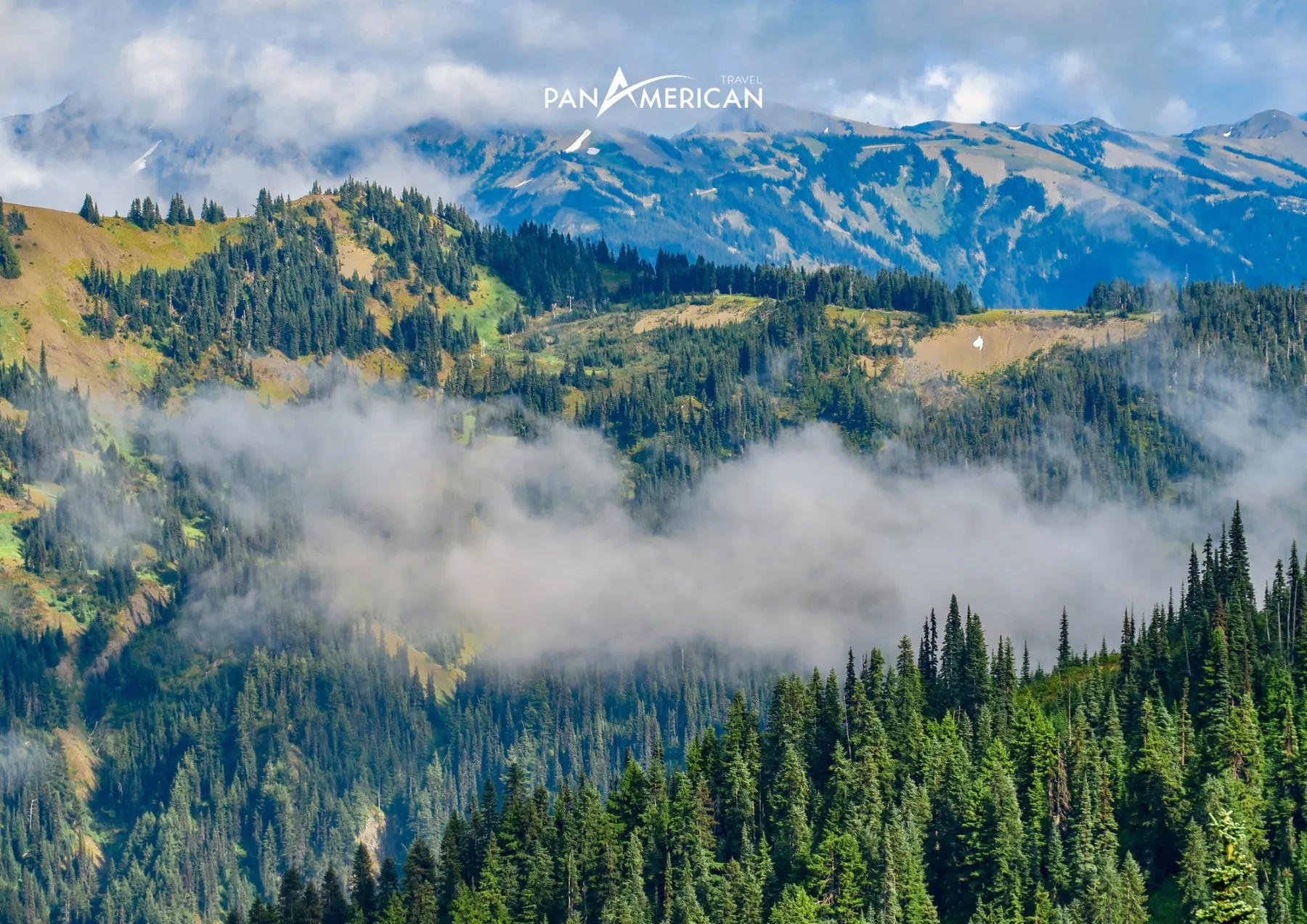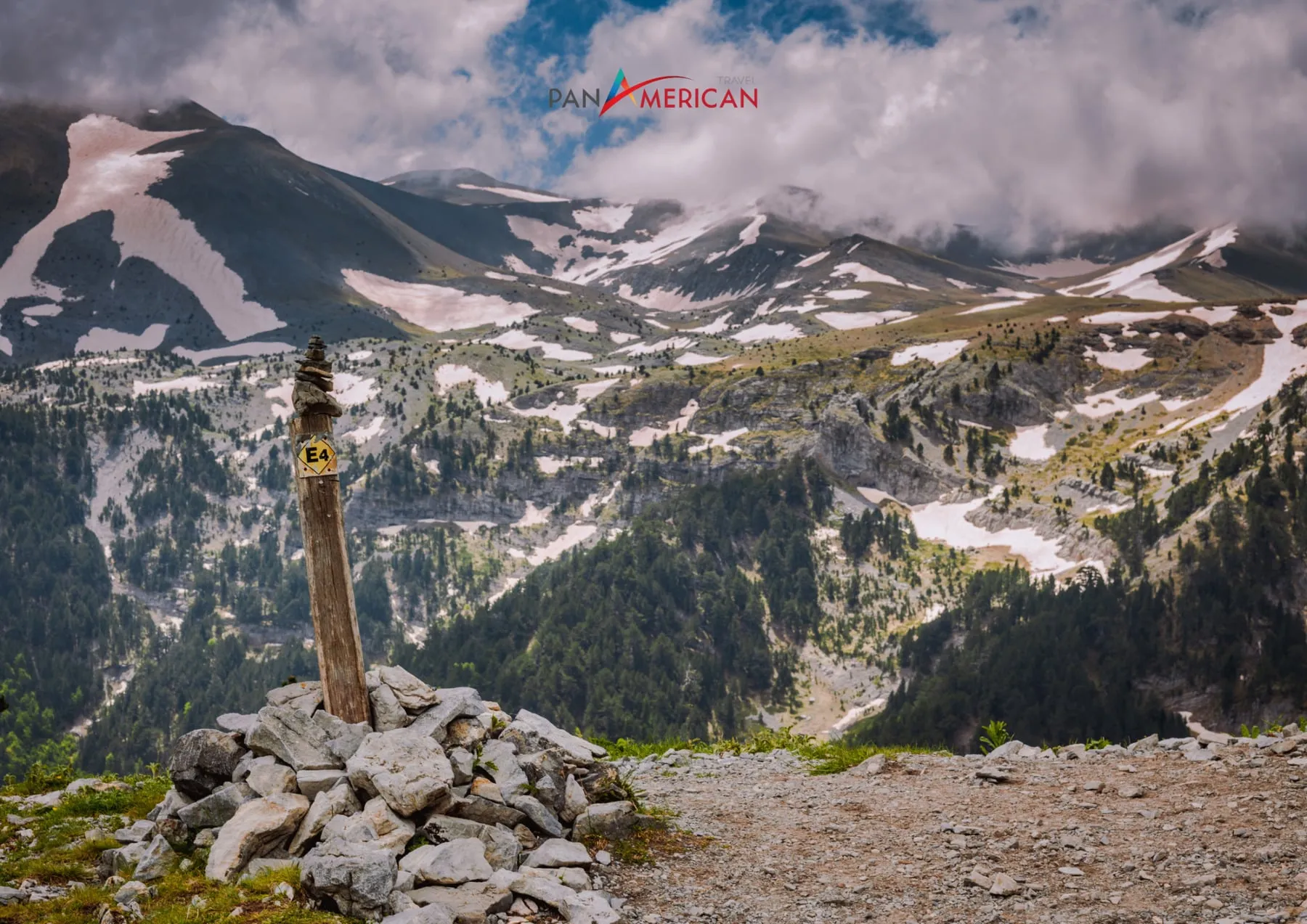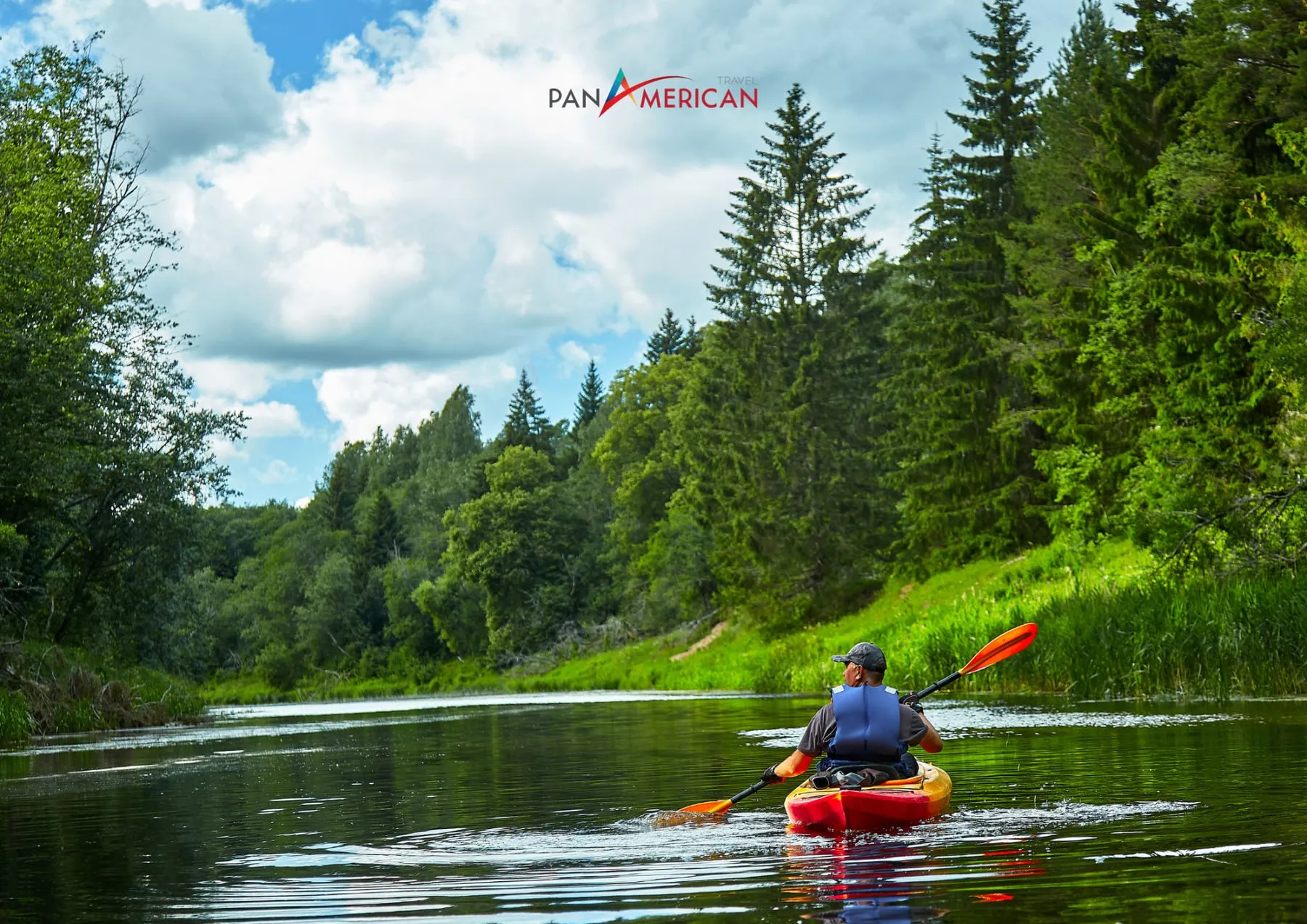Olympic Peninsula, located in Washington State, USA, is not only a region of magnificent natural beauty but also a treasure trove of invaluable biodiversity. Olympic National Park, the heart of this peninsula, proudly gathers three distinctive ecosystems: majestic high mountains with the year-round snow-capped Mount Olympus, lush temperate rainforests, and pristine coastlines stretching along the Pacific Ocean. Visiting the Olympic Peninsula, travelers will not only admire the stunning scenery but also have the opportunity to immerse themselves in nature, discover the richness of the ecosystems, and experience authentic ecotourism. Let’s explore the wonders that the Olympic Peninsula offers on this memorable ecotourism journey with “Du lịch khắp thế gian” (Travel Around the World).
Olympic Peninsula: An Ideal Ecotourism Destination
Nestled in the Northwest corner of the United States, the Olympic Peninsula is bordered by the Pacific Ocean and the Puget Sound, creating a unique and diverse terrain. Olympic National Park, spanning over 4,000 km², occupies most of the peninsula, preserving precious ecosystems intact. This diversity is not only reflected in the landscape but also in the rich flora and fauna, making it a leading ecotourism destination in the world.
Ecotourism in the Olympic Peninsula is not just about sightseeing; it’s also an opportunity for visitors to learn more about nature, raise environmental awareness, and contribute to the sustainable development of the local area. Olympic National Park facilitates visitors to get closer to nature through activities such as hiking in primeval forests, exploring diverse marine ecosystems, kayaking on crystal-clear lakes, or camping in the wilderness.
Ideal Time for an Ecotourism Trip to Olympic Peninsula
To have a fulfilling ecotourism trip to the Olympic Peninsula, choosing the right time is very important. Each season offers unique experiences, suitable for different preferences and goals of each traveler.
Summer (June – August): Peak Season for Ecological Activities
Summer is the best time to explore the Olympic Peninsula, especially for outdoor ecotourism activities. Warm, dry weather with temperatures ranging from 15°C to 25°C (59°F to 77°F) creates favorable conditions for hiking, mountaineering, camping, and other nature exploration activities.

In summer, visitors can join guided ecotours to explore the Hoh temperate rainforest ecosystem in depth, learn about wildlife, or participate in environmental protection volunteer activities. However, summer is also the peak tourist season, with a large number of visitors flocking to the Olympic Peninsula, especially on weekends and holidays. Therefore, if traveling in the summer, you should book accommodations, tours, and other services in advance to ensure a smooth trip.
Early Autumn (September – October): Enjoy Autumn Beauty and Tranquility
Early autumn is another great time to experience ecotourism in the Olympic Peninsula. The weather is still pleasant, with temperatures ranging from 10°C to 20°C (50°F to 68°F), neither too hot nor too cold, very suitable for outdoor activities. The highlight of autumn is the vibrant colors of nature, from the red and yellow maple leaves to the lush green coniferous forests, creating a beautiful landscape painting.
The number of visitors in autumn also decreases significantly compared to summer, bringing peace and tranquility for visitors to fully enjoy the beauty of nature. This is an ideal time for hiking in the forest, bird watching, landscape photography, or simply relaxing and immersing yourself in nature. Campgrounds are also less crowded, creating conditions for those who want to experience ecological camping in the wilderness.
Top 5 Must-Visit Ecotourism Destinations in Olympic National Park
Olympic National Park boasts countless attractions for ecotourists. Here are 5 highlights that you should not miss when exploring the Olympic Peninsula:
1. Hoh Rain Forest: Explore the Unique Temperate Rainforest Ecosystem
The Hoh Rain Forest is one of the few remaining temperate rainforests in North America, recognized by UNESCO as a World Heritage Site. Stepping into the Hoh Forest, visitors will be amazed by the mysterious and pristine beauty of the primeval forest. Centuries-old trees, covered in lush green moss, rise like giant towers. The rich vegetation with ferns, lichens, and shrubs creates a diverse and unique ecosystem.

Visitors can explore the Hoh Forest by hiking on the Hoh Rain Forest Trail, weaving through the most beautiful forests and admiring Douglas firs and moss-covered oaks. The Hoh Forest is also home to many rare wildlife species such as Roosevelt elk, black bears, cougars, and many endemic birds. Ecotourism in the Hoh Forest is not only an opportunity to admire the scenery but also a chance to learn about the importance of temperate rainforests for the environment and global biodiversity.
2. Mount Olympus Summit: Conquer the Peak, Admire the Alpine Ecosystem
Mount Olympus, the highest peak in the Olympic Mountains, is a majestic symbol of the national park. With an elevation of 2,428 meters (7,965 feet), Mount Olympus is covered in white snow all year round, creating a magnificent landscape. This is an ideal destination for those who love mountaineering and exploring alpine ecosystems.

To conquer Mount Olympus, visitors can choose the Enchanted Valley Trail, a journey of about 80km (50 miles) through rugged mountains, glaciers, and majestic waterfalls. From the summit, visitors will admire the beautiful panorama of the Olympic Mountains, deep valleys, and vast green forests. The alpine ecosystem on Olympus is very special with plant species adapted to harsh conditions such as dwarf shrubs, alpine flowers, and animals such as mountain goats, marmots, and golden eagles. Ecotourism on Mount Olympus offers an experience of exploring wild nature and challenging oneself.
3. Rialto Beach: Discover the Unique Rocky Beach Ecosystem
Rialto Beach, located along the Pacific coast, is one of the most impressive beaches in Olympic National Park. It is famous for its pristine, natural beauty and unique rocky beach ecosystem. Rialto Beach has mysterious black sand, large rocks jutting out of the sea, and driftwood creating a magnificent scene.

Visitors can stroll along the beach, explore tide pools formed between the rocks, and observe small marine creatures such as starfish, anemones, snails, and crabs. Rialto Beach is also an ideal place to watch the sunset and enjoy the fresh sea air. Ecotourism at Rialto Beach offers the opportunity to explore the unique rocky beach ecosystem and learn about the adaptation of marine species to harsh environments.
4. Lake Crescent: Relax and Explore the Freshwater Lake Ecosystem
Lake Crescent, located at the foot of Mount Olympus, is a blue gem in the heart of Olympic National Park. This freshwater lake has an area of about 6 km² (2.3 sq mi), surrounded by high mountains and lush green forests. The water of Lake Crescent is crystal clear, reflecting the beautiful natural landscape, creating a poetic landscape painting.

Lake Crescent is an ideal destination for relaxing, kayaking, fishing, or walking around the lake shore. Visitors can rent kayaks or canoes to explore the lake, admire the scenery from the water, and learn about the freshwater lake ecosystem. Lake Crescent is home to many species of fish, waterfowl, and other wildlife. Ecotourism at Lake Crescent offers an experience of immersing oneself in beautiful nature and learning about the importance of freshwater lake ecosystems.
5. Kalaloch Campground: Experience Ecological Camping Near the Coast
Kalaloch Campground, located near Kalaloch Beach, is one of the most popular campgrounds in Olympic National Park. This campground provides basic amenities such as parking, picnic tables, fire pits, and restrooms, creating conditions for visitors to have a comfortable and convenient camping vacation in nature.
From Kalaloch Campground, visitors can easily access Kalaloch Beach, a pristine beach with soft sand and large rocks. This is an ideal place for ecological camping, enjoying the fresh sea air, and watching the sunrise and sunset over the sea. Visitors should follow ecological camping rules such as not littering, not making loud noises, and not harming plants and wildlife to protect the natural environment. Camping at Kalaloch offers a unique ecotourism experience, close to nature and the sea.
Conclusion
Olympic Peninsula, with Olympic National Park at its center, is a wonderful ecotourism destination where visitors can discover the diversity of nature, learn about unique ecosystems, and raise environmental awareness. From mysterious temperate rainforests, majestic high mountains, pristine coastlines to crystal-clear freshwater lakes, the Olympic Peninsula offers rich and memorable ecotourism experiences. Come and discover the hidden beauty of the Olympic Peninsula, immerse yourself in nature, and experience authentic ecotourism.